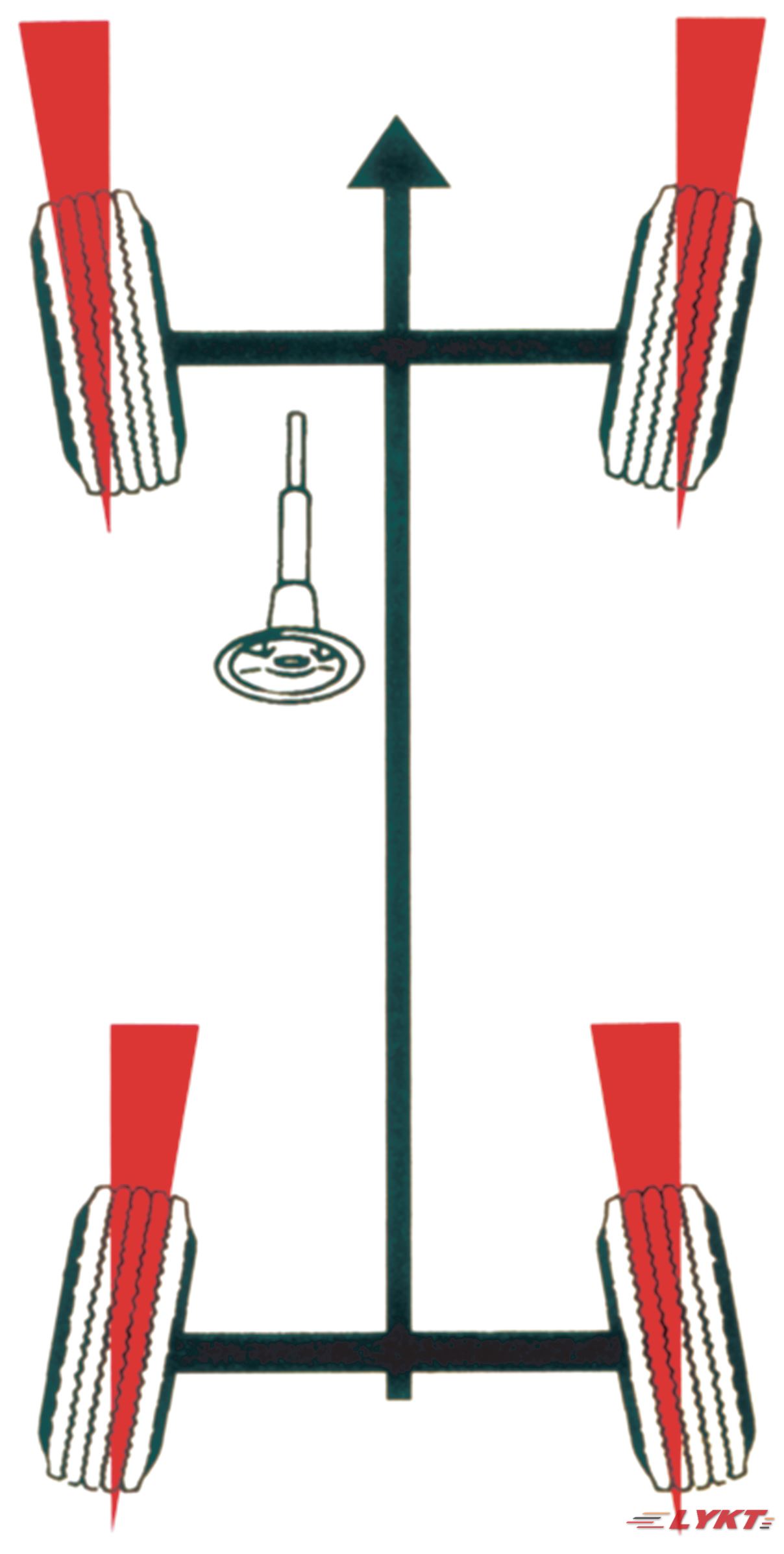2022/1/31 14:51:27Total Read(0)
Look down at the angle between the center plane of the wheel and the longitudinal center plane of the vehicle from the right above of the vehicle.
Positive toe angle: The front end of the wheel is closer to the longitudinal centerline of the vehicle than the rear end (pigeon-toed).
Negative toe angle: the front end of the wheel is farther from the longitudinal centerline of the vehicle than the rear end (toe out).
Use cases:
(1) In a smooth field, using a small amount of front wheel front toe angles, it can keep the car stable during acceleration. But it will reduce the steering reaction of the car when entering the curve, at the same time it will increase the steering reaction when accelerating the exit of curve.
(2) Use a negative toe angle to get more steering when entering a corner, however, it will make the car unstable when it accelerates or going through the undulating road, and it will deviate.
(3)When driving on a flat road, it is recommended to use a negative toe angle of 0 to 1 degree.
(4)Positive toe angle or negative toe angle can be used with Ackerman. Use a certain amount of negative toe with a smaller Ackerman effect, increase the response to the steering front section (starting into the curve) and reduce the reaction to the steering rear section (in the curve); Use a certain amount of positive toe angles with a larger Ackerman effect, to reduce the reaction to the steering front section and increase the reaction in
the steering rear section.
